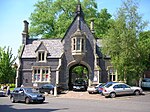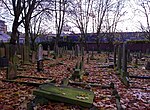Birmingham Mint

The Birmingham Mint was a coining mint and metal-working company based in Birmingham, England. Formerly the world's largest privately owned mint, the company produced coins for many foreign nations including France, Italy, China, and much of the British Empire during the 19th century. Beginning life in 1817 as a family-run brass fittings maker, the company later purchased equipment from the defunct Soho Mint to begin its own coin production. Over the subsequent decades the mint won contracts to mint national currencies, and built minting facilities worldwide so that at its height the Birmingham Mint's capacity surpassed that of even the Royal Mint. By the early 2000s disagreement with the Royal Mint over foreign contracts led to a slump in sales, cumulating in the mint's eventual closure in 2003 ending its almost 200-year history. According to Companies House, however, as of 2021 a revived mint continues to operate, albeit with little business activity.
Excerpt from the Wikipedia article Birmingham Mint (License: CC BY-SA 3.0, Authors, Images).Birmingham Mint
Mint Drive, Birmingham Jewellery Quarter
Geographical coordinates (GPS) Address Nearby Places Show on map
Geographical coordinates (GPS)
| Latitude | Longitude |
|---|---|
| N 52.488333333333 ° | E -1.9166666666667 ° |
Address
Mint Drive
Mint Drive
B18 6EA Birmingham, Jewellery Quarter
England, United Kingdom
Open on Google Maps








